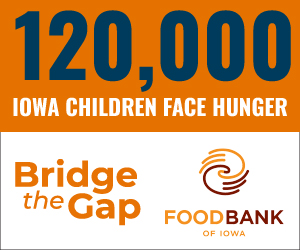NOTEBOOK: DMARC report details impact of food insecurity on people of color

MICHAEL CRUMB Jun 29, 2021 | 5:58 pm
2 min read time
455 wordsArts and Culture, Business Record Insider
People of color in Central Iowa experience food insecurity at disproportionately higher levels than others, according to a recent report by the Des Moines Area Religious Council that details just how much more frequently people of color sought assistance from the organization’s food pantry system.
The report, released June 16, looked at food insecurity in 2020 and the demographics of people who visited DMARC’s 14 partner food pantries and more than 30 mobile food pantry locations. DMARC helped 58,707 individuals through its food pantry system in 2020, the report showed.
According to Feeding America, 54 million Americans were food insecure last year as the coronavirus pandemic tightened its grip on the United States. Nearly 600,000 Iowans were food insecure. In Iowa, the food bank network served about 50 million meals in 2020, up from 33 million in 2019.
While the fact that food insecurity affects people of color at higher rates than their white counterparts is well documented, the report shows just how much greater the impact has been.
Data for the DMARC report was based on information collected from people seeking assistance during an intake process, where various demographic questions are asked, including about race and ethnicity. General population data was taken from the U.S. Census Bureau’s 2019 American Community Survey.
The report, which comes as DMARC celebrates the 45th anniversary of its food pantry network, breaks down the number of food pantry visitors in Des Moines, Ankeny, Johnston, Urbandale, Clive and West Des Moines by ethnicity compared with the general population.
For example, in Des Moines, Black residents make up 11% of the population but accounted for 22% of visitors to DMARC food pantries. In Ankeny, Black residents make up 2% of the population but were 15% of food pantry visitors. In Johnston, Black residents are 3% of the population but accounted for 38% of visitors to food pantries in 2020. Similar results were found in the other communities included in the report.
The report states that the reasons for the disproportionate rate of food insecurity among people of color “are not happenstance.”
“While our society has made progress, the history of racial discrimination in housing, education, healthcare, employment, political representation, the justice system, the financial system, and other systems and institutions goes back hundreds of years, and we continue to see the impacts of these racist policies to this day,” the report states in its executive summary. “Racial disparities in food insecurity and other intersecting issues of poverty are still prevalent in our nation, state, and local community.”
The report states that equitable solutions to food insecurity in Central Iowa need to be found, “and one of the first steps in that process is recognizing disparities as they exist today.”









